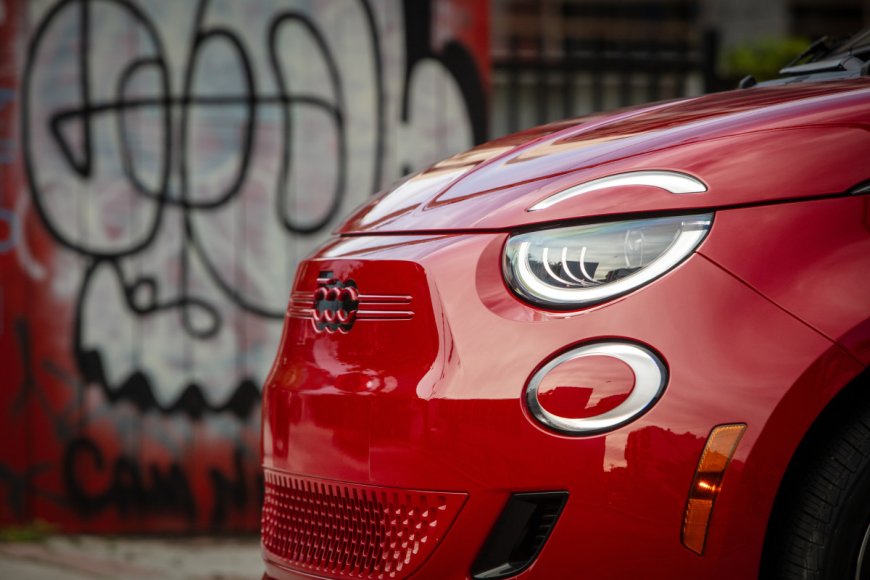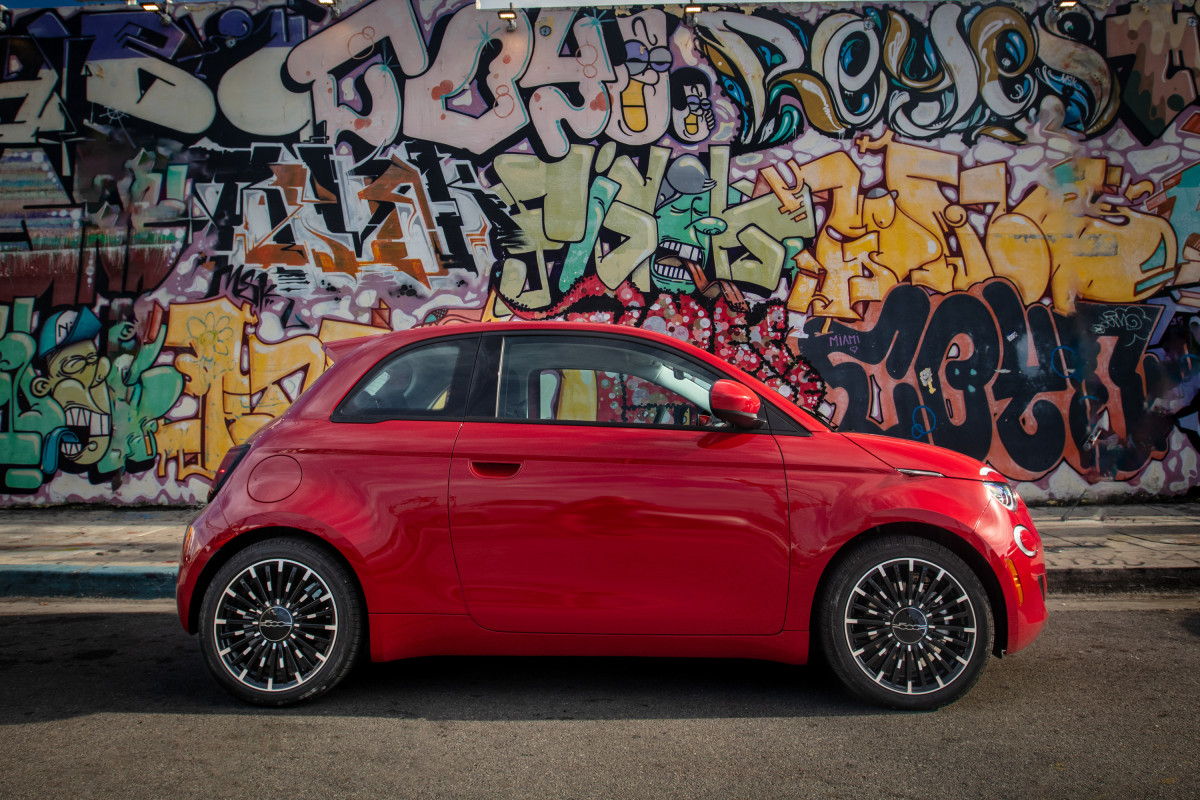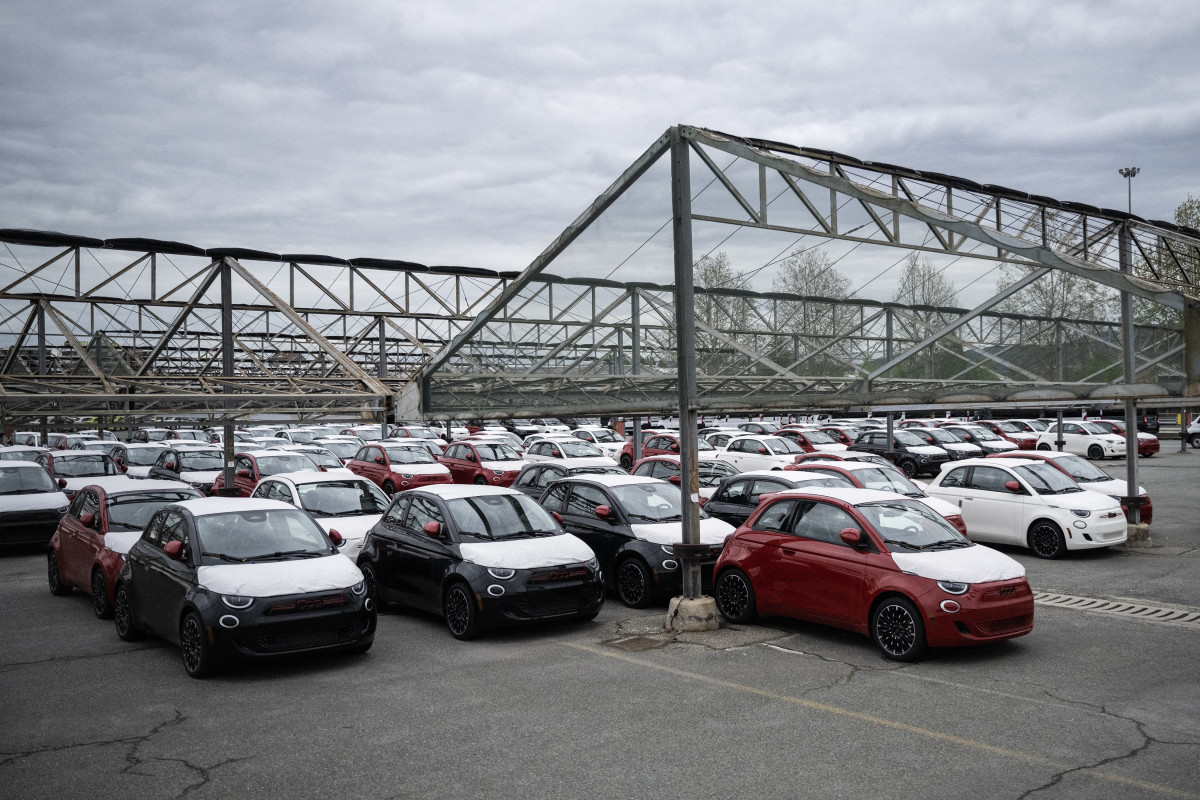No, Fiat is not doing well
Despite a 154% sales increase in the U.S. last year, Fiat's performance is anything but a success.

If you’ve heard that Fiat had a banner year in the United States, you’re not alone. Headlines have touted the Italian brand’s miraculous 154% sales increase in 2024, but let’s pump the brakes. Behind the eye-catching percentage lies a truth that’s less about revival and more about how statistics can be used to distort reality.
Fiat’s U.S. sales rose from a dismal 605 units in 2023 to an equally unimpressive 1,528 units in 2024. That’s fewer cars sold in a year than Toyota typically moves in a day. This so-called success isn’t due to burgeoning demand but rather the introduction of the new Fiat 500e. Fiat’s core 500 model has been out of production in the U.S. since 2019, but in its first year back, it’s clear consumers aren’t flocking to the automaker’s cheerful, compact city car in the way they once did.
Related: Hyundai and Kia lose ground in their home country
The 500e: A rounding error
The Fiat 500e’s sales accounted for nearly all of the brand’s growth in 2024, which is mostly a testament to how few people bought the 500x. While the 500e’s return was initially met with optimism, the numbers tell a different story. Fiat sold just 970 units of the 500e last year—a stark contrast to the model's heyday a decade ago when annual sales of the gas-powered Fiat 500 exceeded 40,000 units in the U.S.
View the original article to see embedded media.
Even with the 500e's modest boost, Fiat remains a marginal player in Stellantis’ portfolio. For context, Jeep sold 587,725 vehicles in 2024, and Ram moved 439,039 units. Fiat’s contribution is barely a rounding error.
Production woes highlight weak demand
Adding to Fiat’s struggles is the stop-and-start nature of production at the Mirafiori factory in Italy, where the 500e is built. Stellantis halted production multiple times in late 2024, citing slow sales. Most recently, the company extended the factory’s shutdown into early 2025. Fiat
When we drove the 500e last year, we found it to be a relatively well-refined, fun car to drive around the city and on short trips, but it’s a competitive market out there for electric vehicles (EVs), and it’s hard to make an argument for why you’d choose a 500e over its competitors. If the numbers don’t tell the story, the repeated production halts do: the 500e is failing to find an audience.
The situation mirrors broader struggles in the EV market. While sales have grown overall, smaller, less competitive offerings like the 500e have struggled to carve out a niche. With a limited range and a price tag that places it in competition with more capable models, the 500e faces an uphill battle.
Related: Sony/Honda's Afeela 1 EV is here, can it compete with Tesla?
Stellantis’ broader troubles
Fiat’s underperformance is emblematic of a larger problem within Stellantis, which posted a 15% sales decline in the U.S. last year. Key brands like Jeep, Ram, and Dodge all saw significant drops, with Dodge sales plummeting 29% due to the end of the Charger and Challenger’s production runs. Even the company’s relative bright spots, like the Dodge Hornet and Jeep Wagoneer, couldn’t offset the widespread losses.
Stellantis is also dealing with leadership turmoil following the sudden resignation of CEO Carlos Tavares, who departed more than a year ahead of his planned retirement. The automaker is now navigating a challenging market environment without a clear vision for the future.
Fiat in context
Fiat’s 2024 performance isn’t any better outside of the U.S. Sales of the 500e have been tepid in Europe as well, where it competes in an even more crowded market of affordable EVs. Despite this, Stellantis has committed an additional $110 million to develop the 500e, including a hybrid 500 model—a gamble that seems increasingly risky given the brand’s inability to gain traction.
To Fiat’s credit, it remains a beloved brand in its home market of Italy, where its cars are often synonymous with urban mobility. But outside of Europe, Fiat struggles to stay relevant. The 500e’s U.S. launch was intended to signal a fresh start, but so far, it has only highlighted Fiat’s diminished role in the automotive landscape.
Related: Trouble for Tesla? EV sales drop for the first time in a decade
Misleading metrics
So why the fanfare around Fiat’s U.S. sales increase? It’s a classic case of percentages being used to obscure reality. A 154% increase sounds impressive until you realize it’s built on a base of just 605 vehicles. It’s the automotive equivalent of doubling your investment when you only started with a few dollars.
View the original article to see embedded media.
Moreover, the focus on year-over-year percentages ignores the fact that Fiat’s sales are still a fraction of what they once were. In 2012, Fiat sold more than 46,000 500s in the U.S. Compare that to last year’s 1,528 units, and it becomes clear just how far the brand has fallen.
Final thoughts
Fiat faces a daunting challenge: how to position itself in a competitive EV market while overcoming years of neglect in the U.S. market. The brand’s reliance on the 500e underscores its lack of a diversified lineup, and with production woes hampering its flagship model, Fiat’s path to recovery seems uncertain at best.
Stellantis must decide whether Fiat has a future in the U.S. or whether its resources would be better spent strengthening its core brands like Jeep and Ram. For now, Fiat’s “success” is little more than a statistical anomaly—and a reminder that percentages don’t always tell the full story.
Related: Ford's OG Mustang falls behind its Mach-E descendent











































